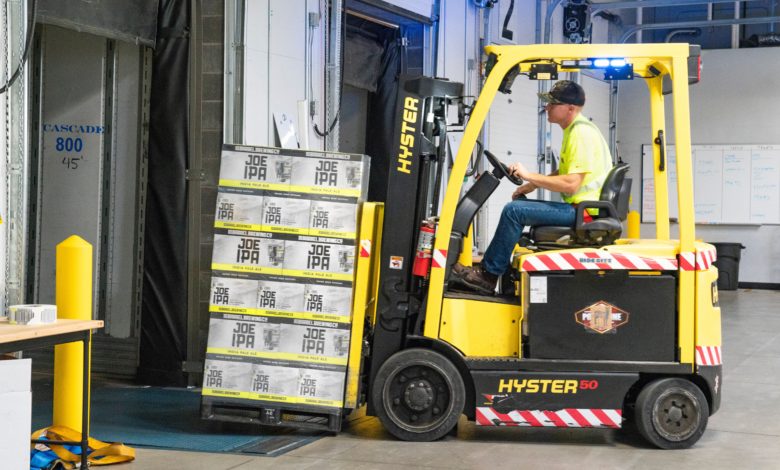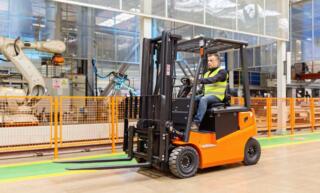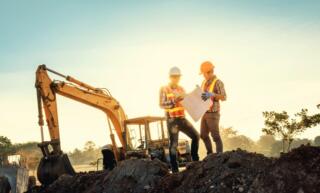
6 Tips For Amateurs Moving Heavy Equipment Successfully
When Tackling Heavy Equipment, It Takes More Than Sheer Willpower
Heavy equipment is a considerable investment for most businesses. It’s not something you want to be moving incorrectly or by yourself. If you want to move some large machinery or construction equipment, we have some secrets that can help make the process easier and more efficient if followed correctly.
Plan
The first thing an amateur should do, before any other task in this list, is to plan. You can do this by drawing out a blueprint of the space you will need and then physically walking through it with all the heavy equipment the clients intend to move. A detailed map that considers every possible obstruction, such as stairs, doorways, furniture, and even thick carpets, will make for a much smoother process overall.
Some people might find this exercise tedious, but if there are enough obstacles in place, then planning could reduce labor immensely, which would result in fewer injuries from overexertion. Remember, if someone does sustain an injury during the moving process, such as when lifting something too high, they may not be eligible for workers’ compensation if they suffered the injury because they did not plan.
When it comes time to move, be sure to assemble all your tools and supplies beforehand so that there is no rush when you get started. There are many different types of equipment one can use on a moving job, such as dollies or furniture sliders. Still, ideally, an amateur should have everything they need before starting work to avoid inconveniences later during the process.
The most important thing about planning for heavy-duty moves, aside from doing thorough research about what type of equipment will best suit their needs, is making sure everyone has adequate training to handle every item correctly and without injury. It isn’t just about the safety of the equipment; it’s also about keeping you and your employees safe.
Having good planning skills and adequate training in handling large gear should make any move easier so that everything goes smoothly from start to finish.
Procure the Right Equipment
Most people think that to move heavy equipment, you only need suitable machines and tools. However, it’s not only about having the equipment but also how you use them. Therefore, an amateur should move heavy machinery or objects to procure the right equipment before transporting anything upstairs or across rugged terrain.
It can be easy to spend too much money on some of these items without considering what you need them for; if you’re trying to move one object from point A to point B, then renting a vehicle with a tow truck or crane hire might make more sense than buying your trailer. Also, please consider whether any specialized tools will need extra training for anyone involved to operate them.
Budget
Budget is a crucial factor when moving heavy equipment. You must know the amount of money you are willing and able to spend before you start planning your move. Even if it’s more than the quoted amount, don’t be afraid to ask for quotes from other companies.
When calculating cost, remember that there may be hidden costs like permits, taxes, and storage fees. Also, don’t forget about the weight limit for road trips because it will also affect how much it’ll cost per mile, and make sure every vehicle has a full tank of gas before they leave. If you don’t budget well for your move, you could end up paying more than double the price.
Study
The first and most important thing is to make sure you know what you’re doing. You should have a fair amount of knowledge about the machine, how to operate it, where its weight distribution lies at any given time (so that you can maximize stability), and so on. Breaking these into sub-categories:
You need to know which machines are best for beginners or those with only basic skill sets. Then, it will save you from getting hurt when trying complicated devices like excavators. For example, backhoes are an excellent place to start if your goal is moving rocks around. There’s not much chance for something going wrong while just moving rocks. A good study will teach you how to operate the machine, as well.
You also need to know which machines are best for professionals and those with more expertise. These machines will allow you to handle much more complicated devices like excavators. However, these types of machines are just as dangerous when misused (or worse), so a professional must know what they’re doing before ever attempting to use them. Again, a different study will teach you how to properly use these tools without causing any harm or injury.
Conduct Risk Assessment
The risk assessment for the project is critical, and you should do it carefully. It’s all about identifying what could go wrong on-site during construction or demolition, how likely it will happen, and what would result if such an event occurs. Several factors will affect your level of safety, including:
- Type of work you are doing (demolition versus new build)
- Time constraints – weather conditions
- Regional geology to consider seismic activity and earthquakes
- The type of machinery you use for work
- Proximity to live power cables, other construction sites, and people
- What you’re working with (wet surfaces or heights)
It would help if you let an experienced individual carry out the risk assessment exercise. It’s only when you’ve conducted this thorough evaluation that you can make your final decision on whether it’s safe enough to proceed without putting anyone at any unnecessary risks.
Ensure Steady Communication With the Team
Every team member needs to know what the colleagues are doing. Of course, it is best for larger teams, but even a small two-person moving crew can benefit from taking time at the beginning of each day to discuss anything that might have changed since yesterday. It’s also helpful to write down tasks or jobs ahead of time, so there aren’t any surprises, and everyone knows in advance what they’re supposed to do when it comes up.
Conclusion
One of the most important things to remember is that weight can be a hindrance. Heavier objects are more challenging to move because they don’t slide as easily on flat surfaces and have an increased momentum force, making them harder for amateur movers to stop when running into walls or other people.




